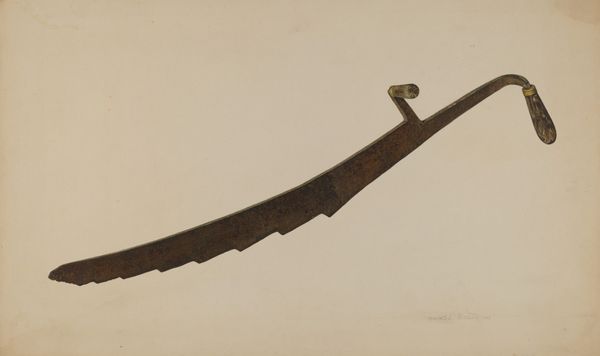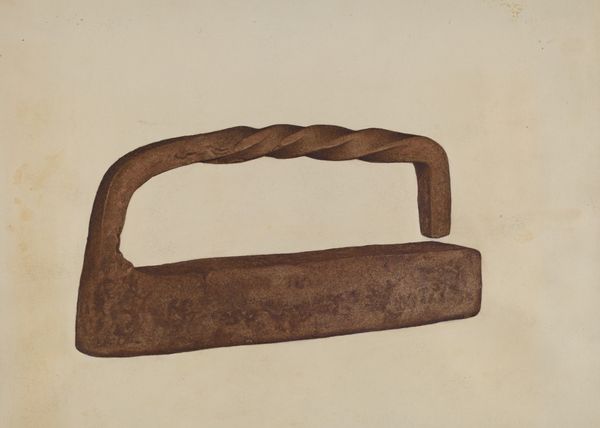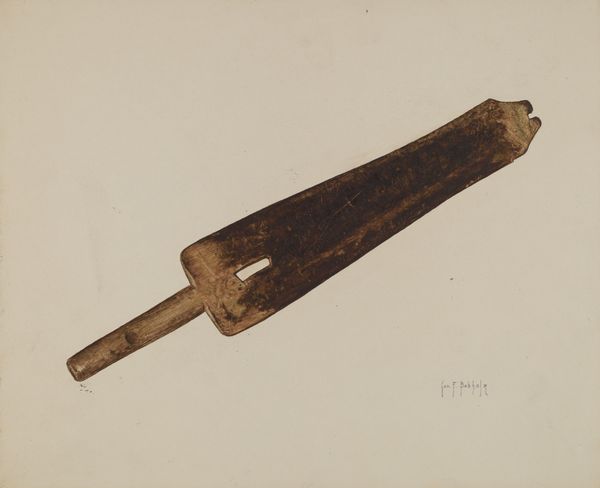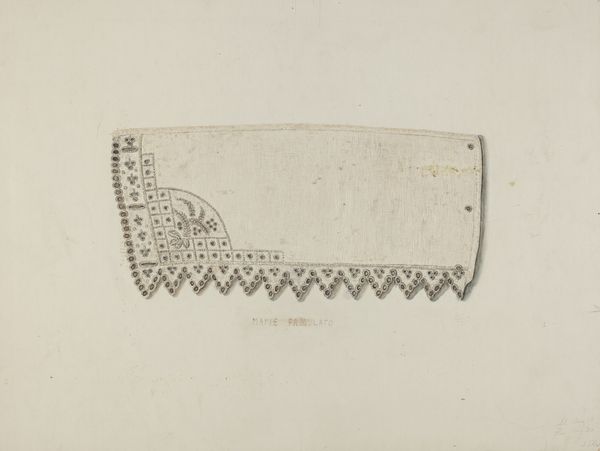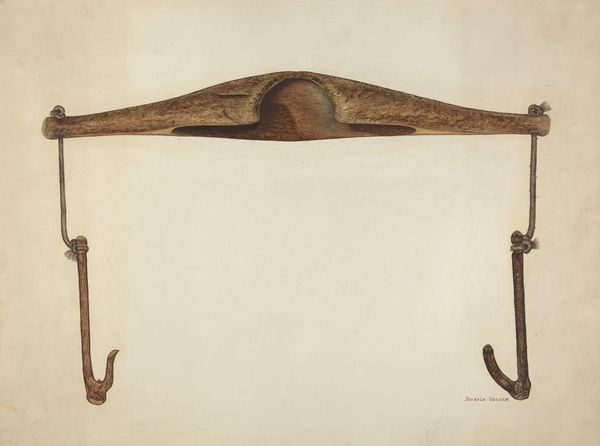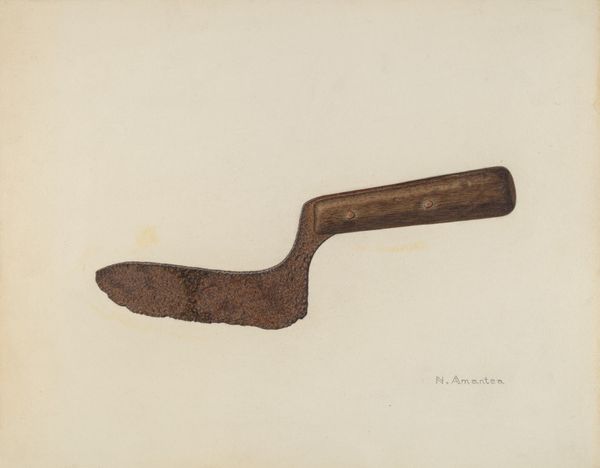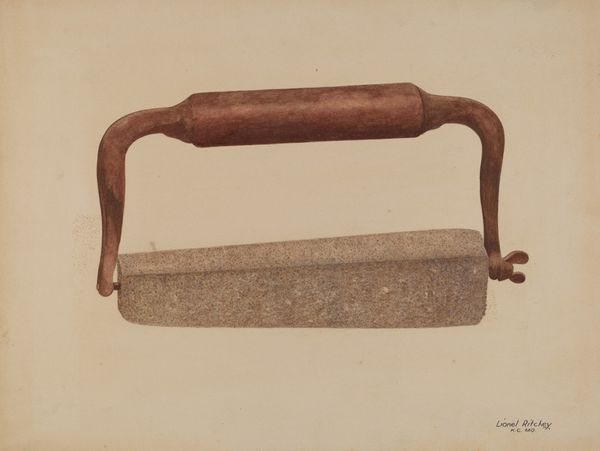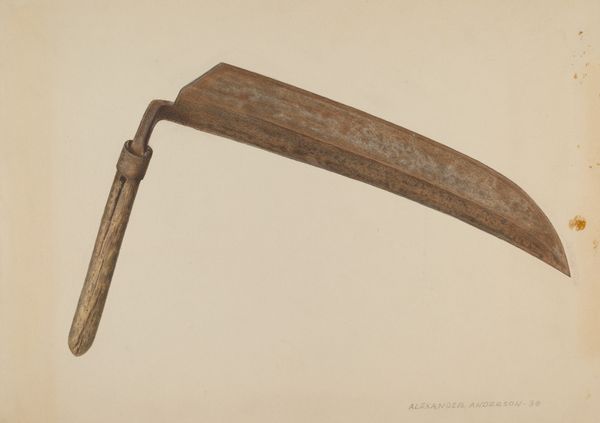
drawing, watercolor
#
drawing
#
watercolor
#
watercolor
#
realism
Dimensions: overall: 24.5 x 35.8 cm (9 5/8 x 14 1/8 in.)
Copyright: National Gallery of Art: CC0 1.0
Curator: Looking at this watercolor and drawing, created in 1939 by Clarence Secor, entitled "Basket Maker's Splint Gauge," what strikes you most? Editor: Immediately, I am drawn to the repetition of these shapes and forms. They're almost like abstracted eyes staring back at the viewer, arranged in a precise, perhaps ritualistic manner. There is also something of a shield or defensive symbol evoked by its presentation. Curator: That's an interesting observation. Secor created this artwork during a period marked by industrial expansion and the systematic displacement and disenfranchisement of indigenous communities. As the name implies, the gauge tool itself speaks to the material production and labor within specific communities, as well as to broader systems of commodification that dispossess individuals of economic and material control. What cultural history does the tool invoke for you? Editor: Well, the presence of the carefully aligned points and voids speak to me of ancient counting devices, like the abacus, or even older forms of notation embedded within material culture, such as notched bones and knotted cords. I am drawn to the tactile impression these create: a symbolic interface between the craftsman and his materials. Curator: Precisely. We see here the tension between industrial uniformity, which gauges often imposed, and indigenous artisanal autonomy and economic practices, with Secor documenting the shift towards an unsustainable, exploitative culture, capturing a moment of both continuity and profound change. We can perhaps think about how this period created and solidified certain colonial powers that, decades later, we still grapple with today. Editor: Yes, the very simplicity of the form carries a significant weight. The fact that someone took the time to render such an item—an everyday, perhaps vanishing object—gives it the presence of something iconic, a symbolic record, almost a spiritual trace. Curator: The artist clearly wanted us to remember and confront this past and present moment through the symbolism of a craft in decline. It invites critical self-reflection on our own economic drivers, consumption practices, and social injustices. Editor: The image definitely offers a window into a lost world of specialized skill, a cultural memory embedded in a tool, beautifully observed by the artist. Thank you for offering me new insights!
Comments
No comments
Be the first to comment and join the conversation on the ultimate creative platform.
